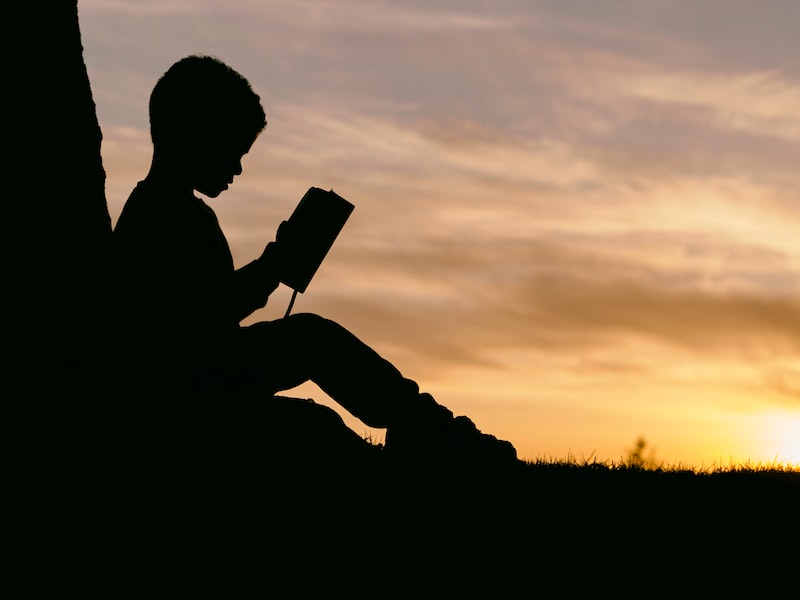Have you ever wondered why some students excel in traditional classroom settings while others struggle to keep up? The answer lies in the one-size-fits-all approach that is often taken in education. Fortunately, there is a revolutionary concept called personalized learning that aims to address this issue by tailoring education to individual needs.
So, what exactly is personalized learning? In simple terms, it is an educational approach that recognizes the unique abilities, interests, and learning styles of each student. Instead of following a rigid curriculum, personalized learning focuses on customizing the learning experience to meet the specific needs of students.
Imagine a classroom where students have the freedom to learn at their own pace and explore subjects that genuinely capture their interest. Personalized learning makes this possible. It allows students to take ownership of their education by providing them with choices and flexibility in how they learn and demonstrate their understanding.
One of the key aspects of personalized learning is the use of technology. With the help of digital tools and resources, educators can create a highly interactive and engaging learning environment. For example, students can access online modules, videos, and interactive simulations that cater to their individual learning styles. This not only enhances their comprehension but also keeps them motivated and eager to learn.
Moreover, personalized learning encourages collaborative learning experiences. Students can work together on projects, engage in discussions, and share their knowledge with their peers. This not only fosters teamwork and communication skills but also creates a supportive and inclusive learning community.
Another advantage of personalized learning is its ability to identify and address gaps in students’ knowledge. Through continuous assessments and feedback, educators can identify areas where students may be struggling and provide targeted interventions to ensure their progress. This tailored approach helps students stay on track and reach their full potential.

In conclusion, personalized learning offers a promising solution to the limitations of traditional education. By embracing individuality, utilizing technology, fostering collaboration, and addressing learning gaps, it holds the potential to revolutionize the way we educate our future generations. So, let’s embrace the power of personalized learning and unlock the full potential of every student!
Adapting Curriculum for Personalization
Have you ever wondered why some students excel in certain subjects while struggling in others? The answer lies in the unique learning styles and preferences each student possesses. One-size-fits-all approaches to education no longer meet the needs of today’s diverse student population. That’s where adapting curriculum for personalization comes into play.
Personalizing the curriculum involves tailoring educational content to match individual students’ interests, abilities, and learning styles. By doing so, educators can foster a more engaging and effective learning experience. It’s like customizing a suit to fit perfectly, ensuring optimal comfort and style.
By incorporating personalization into the curriculum, teachers can tap into students’ intrinsic motivation. When students feel a personal connection to the material, they become more invested in their own learning journey. This approach encourages active participation and a deeper understanding of the subject matter.
So, how can curriculum be adapted for personalization? One method is through differentiated instruction. This technique involves providing multiple avenues for students to access and engage with the content. For example, visual learners may benefit from graphs or diagrams, while auditory learners might prefer listening to lectures or engaging in discussions. By catering to different learning styles, educators can maximize student engagement and comprehension.
Another way to personalize the curriculum is by offering choice and flexibility. Allowing students to select topics of interest or projects that align with their passions empowers them to take ownership of their learning. It encourages creativity, critical thinking, and problem-solving skills. When students have a say in what they learn, they are more likely to stay motivated and develop a lifelong love for learning.

Technology also plays a vital role in curriculum personalization. With the advent of digital tools and online resources, educators can leverage adaptive learning platforms and interactive multimedia to cater to individual student needs. These technologies provide personalized feedback, track progress, and offer targeted interventions. They offer a virtual tutor, guiding students through their unique learning paths.
In conclusion, adapting curriculum for personalization is a transformative approach to education. It recognizes and values the diverse strengths, interests, and learning styles of students. By tailoring the curriculum to meet individual needs, educators can create a learning environment that fosters engagement, motivation, and a lifelong love for learning. So let’s embrace the power of personalization and unlock the full potential of every student.
Technology and Personalized Learning
In today’s fast-paced world, technology has become an integral part of our lives. It has revolutionized various aspects, including education. Personalized learning is gaining momentum as a powerful educational approach that tailors instruction to meet the unique needs and interests of each student. But what role does technology play in personalized learning? Let’s delve into the details.
Technology serves as a catalyst for personalized learning, providing students with endless opportunities to explore and engage with content in a way that suits their learning style. With the aid of digital tools, students can access a wealth of information and resources at their fingertips. Whether it’s interactive videos, online simulations, or virtual reality experiences, technology empowers learners to take charge of their education.
One of the key advantages of technology in personalized learning is its ability to collect and analyze data. Through online assessments, adaptive software, and learning management systems, educators can gather valuable insights into each student’s progress. This data enables teachers to identify areas where students excel and areas where they struggle, allowing for targeted interventions and individualized support.
Moreover, technology fosters collaboration and communication among students and teachers. Online discussion boards, video conferencing, and collaborative platforms enable students to connect with their peers and educators beyond the confines of the classroom. This virtual interaction cultivates a sense of community, encourages active participation, and promotes critical thinking and problem-solving skills.
Imagine a classroom where a student who struggles with math receives personalized tutorials through an interactive app, while another student who excels in science engages in real-time experiments using virtual lab simulations. Technology makes this possible, offering tailored learning experiences that inspire curiosity, creativity, and independence.
In conclusion, technology and personalized learning go hand in hand, revolutionizing education by providing tailored instruction, fostering collaboration, and collecting valuable data. As technology continues to evolve, so does its potential to transform the way we learn and teach. By embracing innovative digital tools, educators can unlock the full potential of personalized learning, empowering students to thrive in an ever-changing world.
Assessments and Feedback in Personalized Learning
Have you ever wondered how personalized learning truly works? One of the key components that drives its effectiveness is assessments and feedback. These elements play a crucial role in tailoring education to individual needs, promoting growth, and maximizing learning outcomes.
In personalized learning, assessments are not just about grades and scores; they are powerful tools for understanding students’ strengths, weaknesses, and progress. Instead of relying on standardized tests alone, personalized assessments take into account diverse learning styles, interests, and abilities. By using a variety of assessment strategies, such as portfolios, projects, and performance-based tasks, educators gain a holistic view of each learner’s capabilities.
But assessments alone are not enough. Feedback is the catalyst that propels personalized learning forward. Timely and constructive feedback helps students reflect on their work, identify areas for improvement, and set new goals. In this context, feedback becomes a guiding force rather than a mere evaluation tool. It empowers learners to take ownership of their education, fostering independence and self-directed learning.
Imagine personalized learning as a customized journey tailored specifically to meet your learning needs. Assessments are like the trail markers—they provide valuable insights into your progress and guide you along the way. Feedback acts as your personal coach, cheering you on, offering guidance, and helping you become the best version of yourself.
Moreover, assessments and feedback in personalized learning create a symbiotic relationship. As learners engage in continuous self-assessment, teachers can further personalize instruction based on their insights. This iterative process ensures that education remains adaptive and responsive to individual student needs.
In conclusion, assessments and feedback form the backbone of personalized learning. They bring out the true essence of customization, enabling educators to tailor instruction and support to each and every learner. So, let’s embark on this exciting journey of personalized learning together, where assessments and feedback are our trusted companions, guiding us towards mastery and growth.
Challenges and Considerations in Personalized Learning
Are you ready to embark on a learning journey tailored just for you? Personalized learning is an exciting educational approach that aims to meet the unique needs, interests, and abilities of individual learners. While it holds great promise for transforming education, it is not without its challenges and considerations. In this article, we will explore some of the key hurdles and important factors to keep in mind when implementing personalized learning.
One of the foremost challenges in personalized learning is ensuring equitable access to resources and technology. Not every student has the same level of access to devices, internet connectivity, or even supportive learning environments at home. Bridging this digital divide is crucial to ensure that all learners can fully participate and benefit from personalized learning experiences.
Another hurdle lies in developing suitable instructional materials and assessments. Traditional textbooks and standardized tests may not align with the diverse learning paths and goals of personalized learning. Educators need to create or curate a wide range of resources and design authentic assessments that accurately gauge individual progress and mastery. This requires time, expertise, and collaboration among educators and content developers.
Implementing personalized learning also necessitates robust data management systems and tools. Gathering and analyzing vast amounts of learner data is essential for tailoring instruction, identifying areas of improvement, and making informed decisions. However, safeguarding student privacy and maintaining data security are paramount concerns that must be addressed to build trust and ensure ethical use of data.
Furthermore, personalized learning requires a shift in teaching practices and professional development for educators. Moving away from the one-size-fits-all model demands a deep understanding of each student’s strengths, weaknesses, and interests. Teachers must develop new instructional strategies, cultivate strong relationships with students, and continuously refine their pedagogical approach to effectively support individual learners.
In conclusion, personalized learning offers immense opportunities to revolutionize education. However, addressing challenges such as equitable access, instructional materials, data management, and teacher training is crucial for its successful implementation. By overcoming these obstacles, we can create learning environments that empower students to reach their full potential and foster a lifelong love for learning.
[Word count: 300]
Implementing Personalized Learning Approaches
Are you tired of the traditional one-size-fits-all approach to education? Do you believe that every student has unique learning needs? If so, then personalized learning approaches may be the key to unlocking their full potential. In this article, we will explore the benefits and strategies of implementing personalized learning in today’s educational landscape.
Personalized learning is an innovative approach that tailors instruction to meet the individual needs, interests, and abilities of each student. Gone are the days when all students were expected to learn at the same pace and using the same methods. With personalized learning, educators recognize that students come from diverse backgrounds and possess different learning styles.
So how can personalized learning be implemented effectively? One strategy is through the use of technology. Digital tools and online platforms allow students to learn at their own pace and provide instant feedback on their progress. Adaptive software can even adjust the difficulty level of content based on a student’s performance, ensuring that they are appropriately challenged without feeling overwhelmed.
Another aspect of personalized learning is competency-based progression. Instead of advancing based on the amount of time spent in a classroom, students move forward when they have demonstrated mastery of a particular skill or concept. This approach allows students to take ownership of their learning and ensures a deeper understanding of the material.
Furthermore, personalized learning encourages collaboration and project-based learning. Students engage in hands-on activities that require critical thinking, problem-solving, and creativity. This fosters a deeper level of engagement and prepares students for real-world challenges they will face beyond the classroom.
By implementing personalized learning approaches, educators can empower students to take control of their own learning journey. It cultivates a love for learning and promotes lifelong skills such as adaptability, self-direction, and resilience. Personalized learning truly puts the learner at the center, allowing them to reach their full potential and thrive in an ever-changing world.
In conclusion, personalized learning approaches offer a transformative way to educate students. By tailoring instruction to individual needs and leveraging technology, educators can create a dynamic learning environment that promotes engagement and growth. Isn’t it time we embrace this personalized approach and provide every student with the opportunity to shine?
Success Stories and Case Studies of Personalized Learning
Personalized learning has revolutionized the education landscape, allowing students to thrive in tailored educational environments. Let’s dive into some success stories and case studies that showcase the incredible impact of personalized learning.
Imagine a student who struggled with traditional teaching methods, feeling lost and disengaged in the classroom. Enter personalized learning, which recognizes the unique needs and learning styles of each individual. With personalized learning, this student received a customized curriculum designed to match their interests and abilities. As a result, they not only regained their enthusiasm for learning but also experienced tremendous academic growth. Personalized learning provided them with the opportunity to explore subjects they were passionate about, fostering a deeper understanding and love for knowledge.
In another inspiring case, a school district implemented personalized learning across its classrooms. The teachers embraced this approach, tailoring lessons to meet the specific needs of each student. By leveraging technology and data-driven insights, they identified areas where students required additional support and provided targeted interventions. The results were astounding. Students who had previously struggled were now thriving academically, surpassing expectations and achieving remarkable results. This success story affirmed the power of personalized learning to transform education on a larger scale.
Furthermore, consider a student who faced language barriers and found it challenging to keep up with their peers. Personalized learning stepped in as a game-changer, recognizing the student’s unique circumstances and providing them with a customized language acquisition program. Through individualized instruction, immersive experiences, and ongoing support, the student gradually developed proficiency in the language. Personalized learning gave them the tools they needed to overcome obstacles and unlock their full potential, opening doors to new opportunities.
These success stories and case studies exemplify the incredible possibilities of personalized learning. It goes beyond a one-size-fits-all approach, acknowledging that every student is unique and deserves an education tailored to their specific requirements. Through personalized learning, we can empower learners to excel, ignite their curiosity, and equip them with the skills needed to thrive in an ever-changing world.












Leave a Reply